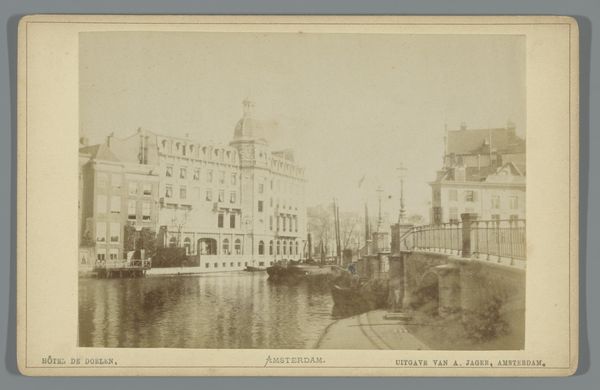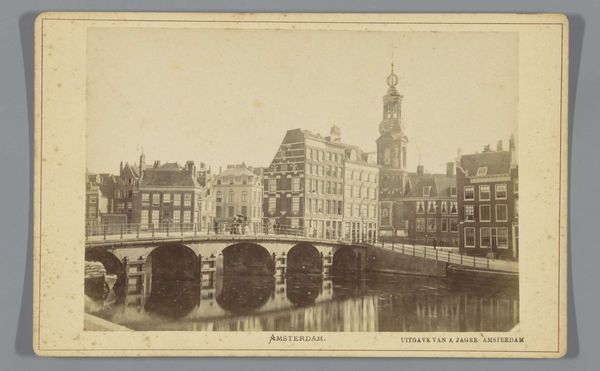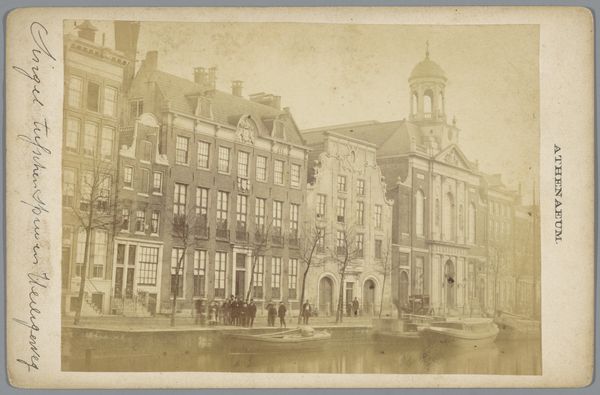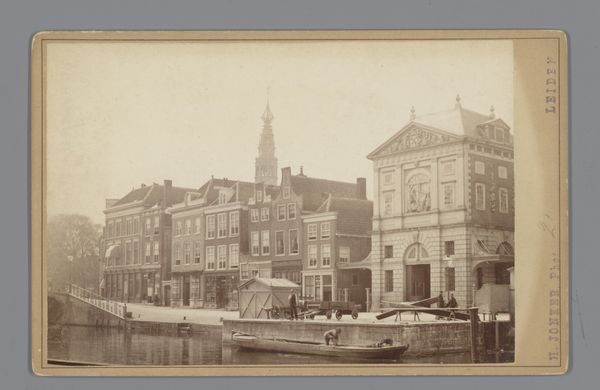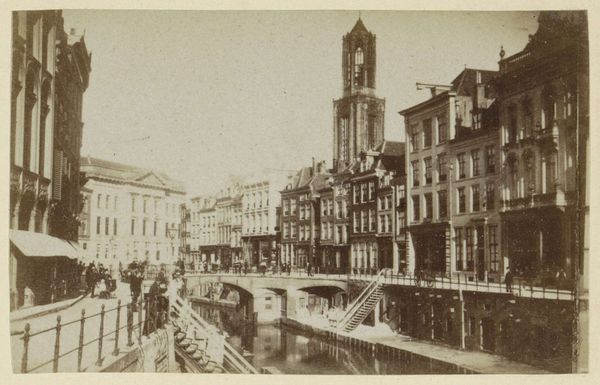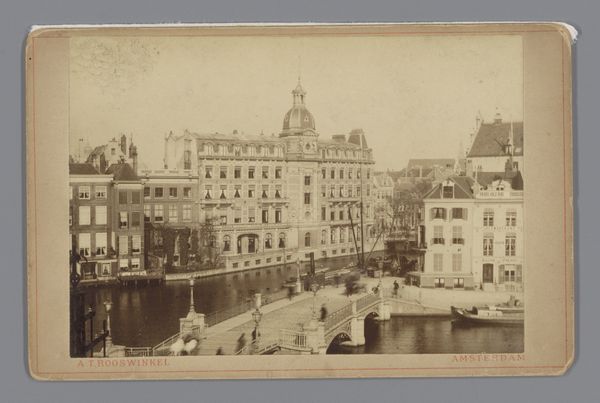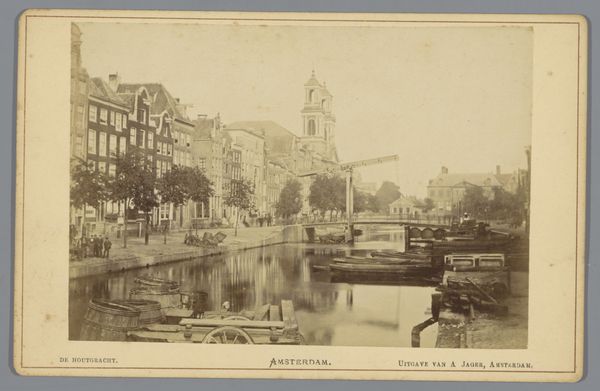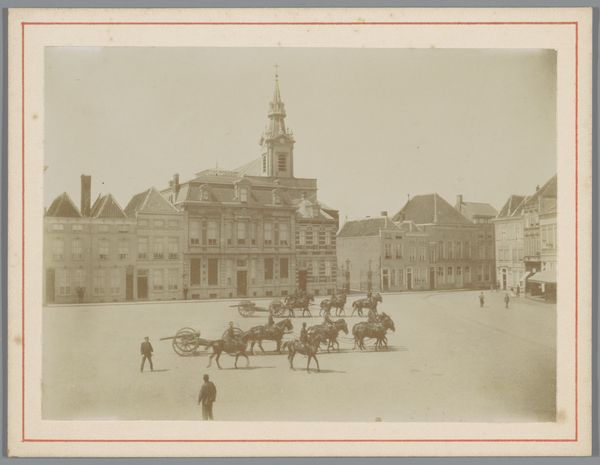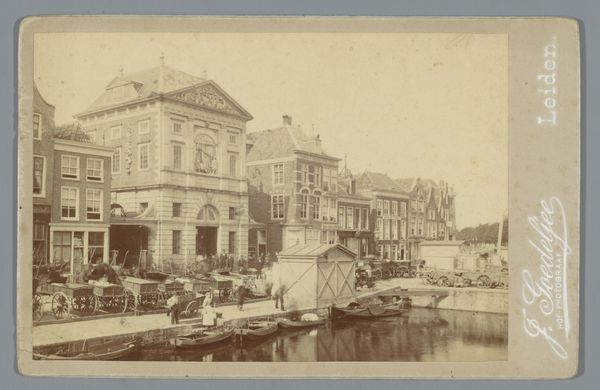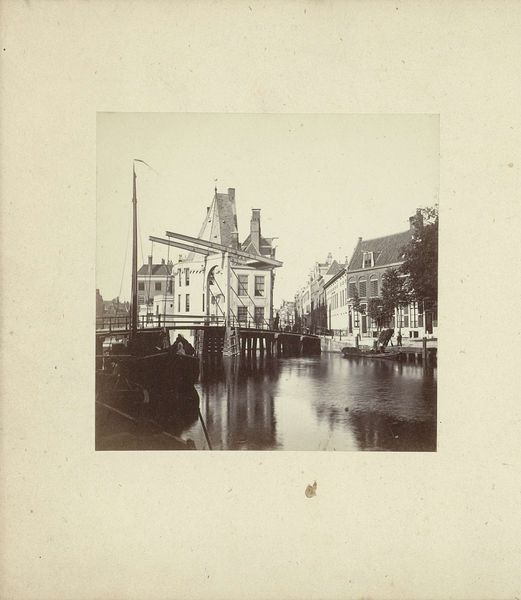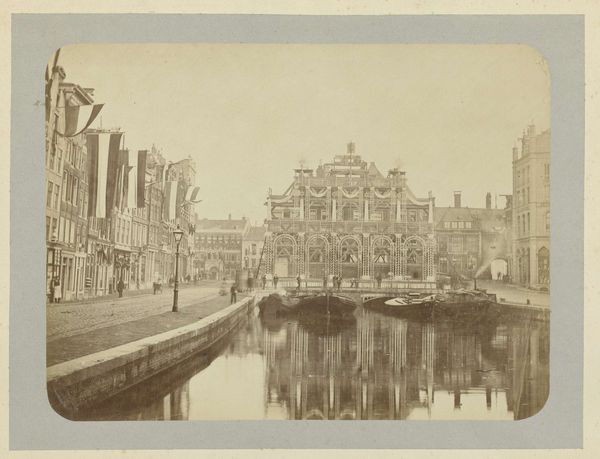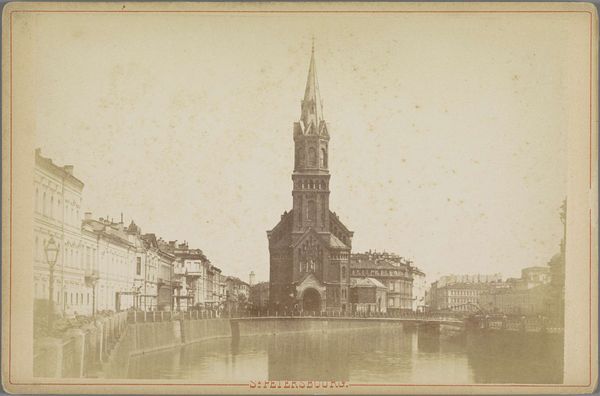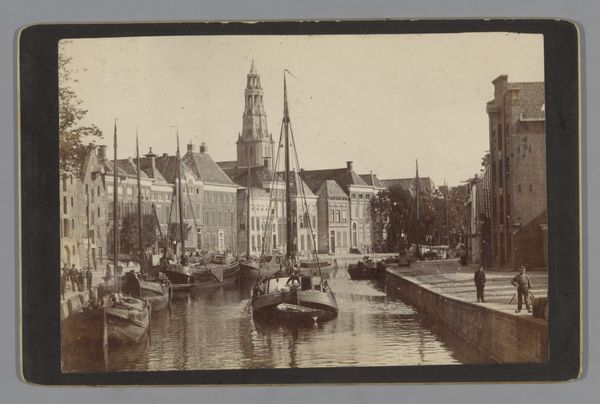
photography, gelatin-silver-print
#
landscape
#
photography
#
gelatin-silver-print
#
19th century
#
cityscape
#
paper medium
#
realism
Dimensions: height 108 mm, width 168 mm
Copyright: Rijks Museum: Open Domain
Editor: This gelatin-silver print, "Gezicht op Hotel de Munt in Amsterdam" by Andries Jager, made sometime between 1860 and 1890, has such a serene feeling to it. The water is so still, reflecting the architecture… It’s a moment captured in time. What do you see in this piece? Curator: Well, first off, time itself. Note how the clock tower dominates the composition, almost like a watchful guardian. It speaks of temporality, but also of civic pride, the rhythm of daily life ordered around that public marker of time. Look how the building and clock-face form a T shape, representing the symbolic meeting of heaven and earth. Do you get the same impression? Editor: I hadn’t considered that! So, beyond just the representation of Amsterdam, you see deeper symbolism in the clock tower and the building it's attached to? Curator: Absolutely. Consider, too, the water’s reflection. The stillness suggests introspection, the conscious mind mirrored by the subconscious depths. And photography itself, at that time, was seen almost magically--capturing reality with light, akin to fixing a fleeting soul onto paper. This photographer chose the moment and place with great deliberation, and so we see Amsterdam's symbolic capital enshrined as a cultural artifact. Editor: That's a much richer interpretation than I initially considered! Thinking about the cultural implications and historical weight definitely changes how I view the photograph. Curator: Precisely. Every visual element contributes to this layered cultural record. And we become more insightful interpreters when we read these cultural narratives embedded in artworks. Editor: I’ll certainly keep that in mind. Thanks for opening my eyes to new perspectives.
Comments
No comments
Be the first to comment and join the conversation on the ultimate creative platform.
